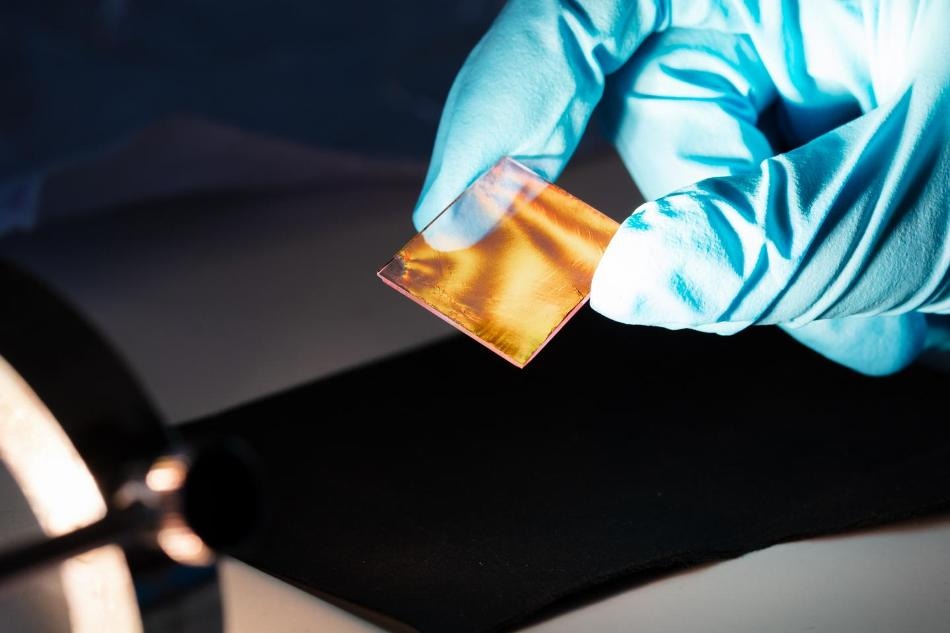May 21 2019
Prof. Dr. Matthias Karg’s group "Colloids and Nanooptics" at the Institute of Physical Chemistry has developed a simple yet precise method for producing extremely ordered particle layers. The group is using miniature, soft and deformable spherical polymer beads with a hydrogel-like structure. Hydrogels are basically water swollen, three-dimensional systems. For instance, hydrogels are commonly found in babies' nappies as super-absorbers with the ability to soak up large quantities of liquids.
 Ultra-thin layer of spherical hydrogel cores with gold particles transferred to a glass substrate. (Image credit: HHU/Christoph Kawan)
Ultra-thin layer of spherical hydrogel cores with gold particles transferred to a glass substrate. (Image credit: HHU/Christoph Kawan)
Inside these hydrogel beads are minute silver or gold particles, merely a few nanometers in size, which Karg's team synthesized at Heinrich-Heine University (HHU) using metal salts in a reduction process. "We can adjust the size of the gold particles very precisely, because the hydrogel shells are permeable to dissolved metal salts, allowing for successive overgrowth of the gold cores." The structure of these core-shell particles can be approximately compared with that of a cherry, where a hard core is enclosed by soft pulp. However, the particles from the lab are approximately one hundred thousand times smaller.
The scientists based at Duesseldorf can then utilize a dilute solution of these hydrogel beads to create thin monolayers. They apply the beads to a water surface, where an extremely ordered and colorfully shimmering layer self-assembles. They move this layer from the water surface onto glass substrates. This transfer makes the whole glass substrate shimmer.
Studying this layer using an electron microscope exposes a regular, hexagonally-ordered particle array. "These are the gold particles in their shells," explains doctoral student Kirsten Volk, "and we see that they are arranged in a single, highly ordered layer." It is the gold particles that establish the color of the layer: They reflect visible light with specific wavelengths, which obstructs and thus forms the impression of a different color from various angles.
These thin layers are very interesting for optoelectronics – that is, the transfer and processing of data using light. It may also be possible to use them to build miniaturised lasers.
Dr. Matthias Karg, Professor and Head of Colloids and Nanooptics Group, Institute of Physical Chemistry, HHU
These nanolasers are just nanometers in size, therefore constituting a core technology in the domain of nanophotonics.
In a study currently published in the journal ACS Applied Materials & Interfaces, the Duesseldorf-based scientists have overcome a huge hindrance in the path to such nanolasers. They were successful in forming collective resonances in the gold particles by incident light. This means that the gold particles are not stimulated separately; instead, all stimulated particles are in resonance. This collective resonance is the elementary prerequisite for designing lasers. The special feature of the research conclusions published is that not only can the particle layers be developed very easily and on a large scale, they are also particularly thin.
For nanolasers and optoelectronic applications, the resonant modes will have to be amplified additionally in the thin layers.
Next we will try to amplify the resonance further by means of doping with emitters. In the long term, this could also allow us to realise electrically powered nanolasers.
Dr. Matthias Karg, Professor and Head of Colloids and Nanooptics Group, Institute of Physical Chemistry, HHU